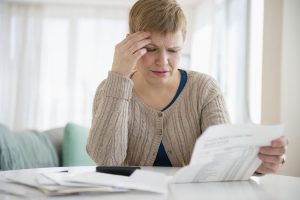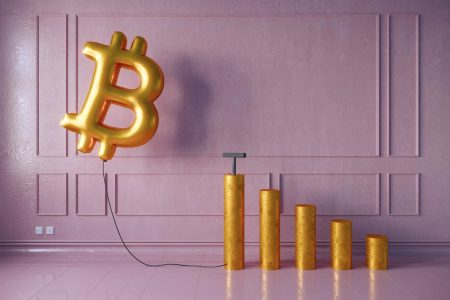Stocks have good years and bad years. In the good years, many or even most stocks will return 10% or more, but then in bad years, they give it back. This sort of market price driven return is not what I am referring to in the title.
A sustainable 10% return is not about market prices, it is about actually earning that amount. A stock price going up could merely be the stock getting more expensive and the now higher multiple reduces future return potential. Thus, a return is only sustainable if the underlying company proportionally increases in value.
This article will discuss how to measure truly sustainable returns and how to estimate forward sustainable returns. It forms the basis on how to identify good businesses positioned to earn 10% or more on a sustainable basis.
We will begin by defining sustainable forward return in its simple and complex forms and then move on to a discussion of how to utilize market price fluctuation as a tool to capture sustainably high returns.
Simple Sustainable Forward Return
In its simplest form, the sustainable forward annual return of a business is:
2MC
A similar equation could be used for bonds by replacing dividends with interest payments.
In a very rudimentary sense, an investment could get to a 10% sustainable return by having anything from 10% dividend yield and 0% growth to 0% dividend yield and 10% growth in the value of the business.
There are, however, a few intricacies in determining the value of a business. A business’s value largely comes from three components:
- Ongoing cash flows.
- Forward rate of growth.
- Level of risk.
If ongoing cash flows are unchanged, forward growth rates are unchanged and the level of risk is unchanged the delta in value of business will equal 0. Thus, the sustainable return, in that case, would be equal to the dividend yield.
More complexity comes in when there are changes to the business. There are a variety of ways in which a company can look like it has a 10% forward return, but doesn’t once proper adjustments are made.
Complex cases
The most classic examples of companies that appear to provide 10%+ returns but really don’t are those with 10% yields that are not sustainable.
- 10% dividend – not covered by earnings.
- 10% dividend – covered by earnings but business in decline.
The first bullet is obvious. If a company is paying a 10% dividend but only has a 7% earnings yield, that extra capital is coming out of the business whether it is asset sales or taking on debt. Regardless, it is clear the true sustainable return is lower than 10% even if they do not cut the dividend.
A trickier example is when the dividend is fully covered by earnings but the earnings of the business require reinvestment to be sustainable. For example, an energy company might have a 15% cash flow yield which appears to easily cover the dividend, but the underlying assets get depleted (oilfields running dry, wind turbines needing replacement, etc.). Perhaps half of their cash flow needs to be reinvested in the business to maintain the same level of earnings.
Thus, even though a 10% dividend is nominally covered by earnings, there is not enough cash being reinvested in the business to maintain earnings in the long run.
On the growthier side there are similar pitfalls in growth companies that look like they should be earning 10%+ sustainable return but really are not.
- 10% growth in earnings – reduced growth rate going forward.
Growth usually follows an S curve. As a company hits a certain point in its development, growth accelerates and then as it hits maturity its growth rate comes back down to a more economically normal level.
During the high slope portion of the S curve, it is fairly common for a company to string together multiple years of 10%+ earnings growth, but it should be noted that the duration of abnormally high growth is finite.
So while the company may have grown earnings from $100 million in one year to $110 million the next, perhaps its outlook of abnormally high growth has shortened. In year 0 it was positioned to grow 10%+ for four more years and in year 1 it only has a 3-year runway of high growth.
Thus, to achieve a true 10% sustainable return it would have had to also do things to extend its runway of growth such that it still has a 4-year growth runway in this instance.
10% sustainable return is uncommon
It is fairly difficult for either growth companies or dividend-paying value companies to generate 10%+ sustainable returns after all the proper adjustments are made.
The market as a whole tends to only return 7%-8% a year depending on the timeframe.
Getting to that 10% level requires something special.
How to find 10%+ sustainable return stocks
10%+ sustainable return is hard to find because if the market knew a stock had that potential its price would be bid up to a point where its forward return was more in line with the market’s 7%-8%.
Thus, it requires figuring out something that the market has missed. There are two main things the market can miss:
- Be better at predicting the future of a given business.
- Be better at discerning what a given business is worth.
Both ways are analytically valid. Both ways are quite difficult.
There are a couple of ways to make it a bit easier:
- Look where others are not. It is easier to beat the market in the small-cap space where one is competing with retail investors versus the mega-cap space where investment firms will spend literally millions of dollars researching a single company.
- Stick to your wheelhouse: specialists are usually going to know more than generalists.
The method that I have found most useful in capturing higher forward sustainable returns is to use market price volatility as a tool.
Making market fluctuations your friend rather than your enemy
People tend to look at market price as a barometer of company performance.
An unfortunate reality is that investment returns in the short term are dominated by fluctuations in market price. The fundamental returns of a business are usually steady and moderate in size while the gains or losses from price fluctuations can be enormous and sudden.
Over time, market pricing noise cancels out while the fundamental returns compound upon themselves. Thus, in the long run, sustainable returns dominate the equation.
However, people are impatient. They want their returns now and may not be willing to wait 10 years for fundamental returns to dominate over market price fluctuation. Since people are impatient, the big investment firms that invest on behalf of their clients are also impatient. They know people pull their money out if returns are bad in the short run. As a result, both the “smart money” and the “dumb money” are tripping over each other to try to out-predict short-term returns. This is why there are so many momentum strategies around these days.
I would encourage thinking of investing more in terms of owning a business. As investors, we own slices of companies whether that is a single share or a big enough chunk to have to file a 13G. No matter how small one’s chunk, the investor is an owner of the company and as such benefits from the company generating profits.
From this perspective of owning companies or pieces of companies, it is much clearer what the goal is.
The returns for a business are its profits. If $1B is invested in a business and it earns $100 million of profits annually, that is a 10% return.
With this perspective, market price volatility starts to look a lot less like a risk and a lot more like an opportunity.
If that $100 million a year profit-generating business is trading at a market cap of $2B that is a 5% annual sustainable return, but if it is trading at $1B in market cap that is a 10% sustainable return.
For any given stock, the entry price determines the level of return. It doesn’t matter if it is growth or value, entry price matters.
So that is the strategy. We observe. We wait. And as the market prices of good businesses get far too cheap, we buy.
Present 10%+ sustainable return opportunities
With REITs and other infrastructure being out of favor in the market many of the stocks have become undervalued. Some are traps, but others are excellent businesses that are simply trading too cheaply.
With the sector trading down, those companies which used to be positioned for 8% sustainable returns are now priced for 10%+. The key is looking for market price deterioration in conjunction with fundamental earnings power that has stayed the same or increased.
Read the full article here











